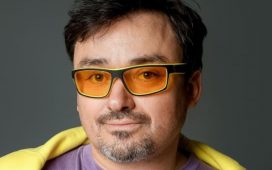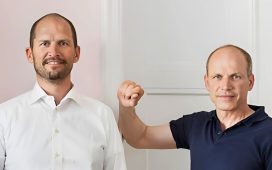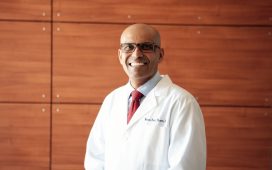Hello and welcome to the EisnerAmper podcast series. I’m your host Elana Margulies-Snyderman and with me today is Chris Bostick, Partner, and Thea Pham, Senior Associate at OCV Partners, an LA-based VC firm that invests in technology and health care startups. Today, Chris and Thea will share with us the outlook for VC investing in tech and health care startups, including the greatest opportunities and challenges, how the firm integrates ESG, DEI and more.
EMS:
Hi Chris and Thea, thank you so much for being with me today.
Chris Bostick:
Thank you for having us, Elana.
Thea Pham:
Thanks for having us.
EMS:
Absolutely. So, to kick off the conversation, I would love to hear about the firm and how you got to where you are today.
CB:
Awesome. So I’ll start a little bit with the firm background, then we’ll dive into OCV, but we’ve both been fortunate to join founding partners here at our firm, OCV that are very established, successful former operators that have been keen on building a multidisciplinary team, including PhDs like myself and Thea. But it starts with our founding partners who prior to starting, Richard Ressler and Hemi Zucker, have scaled, have been successful operators across a multiple billion dollar franchises and across market cycles having scaled through both the.com crash, the global financial crisis, and saw an opportunity to bring value as investors in the private markets, utilizing their experience and expertise, having scaled their businesses from zero to billion plus in revenue to really help founders and give insights to startups in the private markets that we’ve been investing in. And we look to not only provide the internal expertise from our team and our operational backgrounds, but utilize the enterprises that are still of existence that both Richard and Hemi have founded that complement our areas of investment interests across technology and health care and bring external value out as well.
So, the firm started in 2018 with $168 million of Fund 1, and we’re based here, as you said in LA, which is the heart of SoCal, which is the third largest growing venture ecosystem. And we’ve been able to prove out this strategy and make 17 investments across technology and health care since and already have seen five investments exit utilizing that kind of value add, high conviction approach. And then I was fortunate to join as the first PhD hire. The team was interested in building out their health care franchise and having the in-house diligence expertise. So come from my background of over a decade in interdisciplinary research experience, including an undergrad in biology at Cornell, a minor in business, PhD in pharmacology at WVU, and then a postdoc at Columbia University in translational medicine to help build out that franchise and fortunate to hire other people like Thea.
TP:
Yeah, so my background pretty similar to Chris coming from an academic background, I did my PhD in neuroscience at UCLA, was scientifically trained across multiple tier one institutions, both here in the U.S. like UC San Diego, Baylor College of Medicine, as well as University of Oxford in the U.K. But during my PhD, realized the lack of commercializations of great technology that comes out of the lab and realized if I can learn the business side of things, I can actually help aid a lot of that innovations that get to the other side and see the patients. So therefore, I think VC specifically has been a great area for me.
EMS:
Great. Very impressive backgrounds both of you. So that leads nicely into the first question I have for you, given your focus on VC investing in health care and tech, I would like to hear your overall outlook for the space.
CB:
Yeah, I try to simplify it down looking at health care, which is what the focus of myself and Thea lead at our fund. And just thinking about how if you look at health care technology, it’s an industry where fax is still growing at a 9% CAGR. We know very well because our managing partner is one of the founders of Fax or eFax. So, I like to say that it’s over a decade behind whoever, depending on who you ask, where the general technology infrastructure is outside of health care. And that’s a huge problem that’s going to lead to a lot of stagnant innovation and lead to a lot of disparities and outcomes, especially if you think about health equity. So there’s a huge opportunity there if you have the experience and are a savvy investor to really bring innovative companies now that can leverage advancements in technology to really build foundational companies, especially powered by technologies like AI, which we all know of, but as well as other just general technology problems to really help how we treat patients, how we think about the aspects of patient care, whether it be providing care, whether it be paying for care, and whether it be discovering new care by just improving that technology infrastructure.
And then as far as the timing, it’s a challenging market environment right now, and there’s usually, when it’s a great time to invest, it’s a hard time to raise money and vice versa. But definitely this is one of the best times to invest, just proven historically looking at financial trends. You can invest in companies that have more de-risking that are great and fantastic, and a time where innovation’ at its highest, but with the markets having normalized the interest rates going up, you’re able to get more for your dollar and more bang for your buck. And I think the next vintages are going to be very strong.
EMS:
And as a follow up, I’d love for either of you to touch on what are some of the specific greatest opportunities you see in your space and why?
TP:
Yeah, absolutely. So, I think the area that get us excited most is use is applying the cutting edge technology. Like Chris mentioned, gen AI into health care, health care in the U.S. and health care overall I think is still a very outdated industry. There’s a lot of inefficiencies, there’s a lot of issues. And these greatest technologies serve as great toolkits like gen AI to actually help overcome a lot of those inefficiencies in processes like staffing shortages, like overspending. And a lot of it is leveraging these technology to improve and help our doctors and a lot of our experts into gearing them back to patient care, which is what they love to do the most, and taking them away from the nonclinical task that they have to do, like taking notes, et cetera. The caveat there for us specifically is leveraging the technology. And the technology itself is never the main product. Using the technology as an application to revolutionize and improving the processes in health care is usually the product. So, in that case, at OCV, we are really looking to back great founders and founding team that are health care insiders and are using these tools to really help productize a lot of their already knowledge of the health care. So, backing the founders and leveraging those products and building a really true revolutionary business model that aid all the key stakeholder value add. I think those are the key businesses that we’d really look to back.
EMS:
And on the other hand, what are some of the greatest challenges both of you face in your investing space and how do you conquer them?
CB:
Yeah, I think for us, I’ll talk internally. If you think about what I said before, it’s a good time to invest capital, it’s harder to raise capital, and you have to do some education to level set people that don’t be frightened. The market was worse before when you were deploying a lot of capital. Now’s the great time. And that’s something that it’s a funny problem to have. You’re like, it’s clearly a great dynamic, but you see that everyone has to deal from the hangover of a great bull market for a long time. And then for us as far as the external facing and our investment activities, we really want to help guide the company to deal with in health care unique challenge is there’s a lot of misaligned incentives in the U.S. health care system. So, to really build an innovator product, like Thea was mentioning, you have to make sure that you’re getting wins for everyone, and everyone’s wins aren’t measured on the same thing.
So ideally, we’d all want it to be altruistic and patient care be number one. But I like to break it down into the P’s of health care. So, you have patients, providers being the physicians and payers and payers might care about their short-term gains more than they care about the long-term patient outcomes as far as their ranking system. And that’s because of our system. If you’re a payer, patients or customers that you have turn out within seven years usually from your plan and switch to another plan. So, you’re like, well, I’m incentivized to lower my cost in the short term and not adopt new technologies that give better, clearly financially better patient outcomes in the long-term. So, we’re always guiding our companies to say, think about the adoption issues for each of your stakeholders, for the payers that are going to want to see short-term economic return, just as much as they want to see long-term the patients, they can be their own enemy as far as adhering to things.
So, you have to figure out how you make an engaging and fun and leverage technologies or approaches that have been used in other sectors like technology. You want to get people addicted as we are to Facebook, to their care coordination and their apps and make it simple to digest. And for physicians, you want to make it easy for them to adopt new technologies in their workflow. They’re stubborn and don’t like to change. So, we’re always guiding our companies on how they can make the best killer product that addresses all these needs in order to get really good outcomes and huge wins for us as a fund.
EMS:
To shift gears a little bit, ESG and DEI have been top of mind for the investment community and wanted to hear how OCV Partners are addressing these topics.
CB:
I’ll start off with a quick aside to that, that I like to think that our mantra at OCV is to do good by doing well. When you’re a health care investor, everything you do is going to make a huge impact. So that’s something that really excites me, but I’ll let Thea start from here.
TP:
We don’t label ourselves as an impact fund, but I think our team, we’re a four person investment team, a five person investment team, and we come from very diverse background, diverse skill sets, and I think leveraging that and given our diverse network as well, a third of the founding and founders that we backed are actually coming from under representative groups. And I think that also show clearly in a lot of up-and-coming market maps and thesis and etcetera that we’re focusing on.
CB:
Yeah, we’ve been definitely very excited to have over a third of our fund into underrepresented founders, and I think that’s part of the complexity of our own team. Our team is also very diverse and very multidisciplinary, so different backgrounds, and we think that just makes the best investment process.
EMS:
We’ve covered a lot of ground today and wanted to see if either of you have any final thoughts you’d like to share.
CB:
Yeah, we’re very excited about where the market’s going and the opportunities for a fund, like I said, that’s multidisciplinary, to bring in these different perspectives. I think you can learn a lot from the technology side and investing in really cool health care companies now that need to leverage technology. And those are the kind of value adds we’ve been really excited to bring to our portfolio and new investments. And we see huge opportunities as we launch our next fund next year to continue to build our firm and launch more insights, having just lost our insight page, create content for people to think about how to think about these involving landscapes.
EMS:
Well, Chris and Thea, I wanted to thank you so much for sharing your perspective with our listeners.
CB:
Thank you so much again for having us. This was really fun.
TP:
Thanks for having us.
EMS:
Absolutely. And thank you for listening to the EisnerAmper podcast series. Visit eisneramper.com for more information on this and a host of other topics. And join us for our EisnerAmper podcast when we get down to business.










